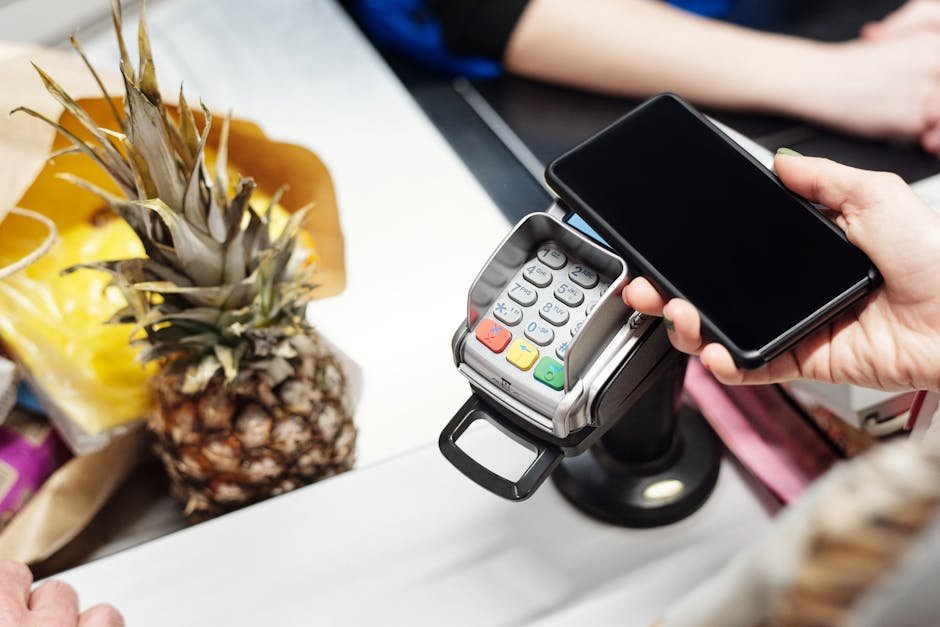In a world where convenience is king, self-service shopping has emerged as a game-changer for consumers. From grocery stores to retail outlets, the shift towards self-service options has revolutionized the shopping experience, offering customers more control and efficiency. Join us as we delve into the profound impacts and underlying psychology of self-service shopping.
Transforming the Shopping Experience
Self-service shopping is not merely a trend but a fundamental shift in how consumers engage with businesses. The convenience of scanning, selecting, and paying for items autonomously has redefined the concept of a quick shopping trip. Retailers worldwide are embracing self-service kiosks, mobile apps, and digital interfaces to cater to tech-savvy consumers seeking efficiency and personalized experiences. The ability to make purchases without the need for extensive human interaction has become a cornerstone of modern shopping experiences.
With the rise of contactless payments and mobile shopping apps, self-service shopping has extended beyond traditional brick-and-mortar stores. Online retailers have integrated self-checkout options, allowing customers to complete transactions with a few taps on their smartphones. This convergence of physical and digital shopping realms highlights the ubiquitous nature of self-service solutions in catering to diverse consumer preferences.
Moreover, self-service shopping empowers consumers by offering transparency and control over their purchase decisions. The ability to compare prices, read reviews, and access product information in real-time enables shoppers to make well-informed choices independently. This shift towards consumer autonomy not only enhances the efficiency of shopping experiences but also fosters a sense of empowerment and satisfaction among customers.
As self-service technologies continue to evolve, retailers must navigate the delicate balance between automation and customer engagement. While self-service options streamline transactions and reduce wait times, maintaining personalized customer interactions remains crucial in building brand loyalty and enhancing the overall shopping experience. Finding the optimal blend of efficiency and human touch is essential in driving consumer trust and loyalty in an increasingly automated retail landscape.
The Evolution of Customer Convenience
The evolution of customer convenience in the era of self-service shopping reflects a paradigm shift in consumer expectations and behaviors. With the advent of self-checkout kiosks and mobile payment solutions, shoppers have come to rely on seamless, contactless transactions that prioritize speed and efficiency. The ability to bypass traditional checkout lines and complete purchases swiftly has become a defining aspect of modern shopping experiences.
Furthermore, the integration of self-service options in various industries, from hospitality to healthcare, illustrates the universal appeal of customer-controlled services. Whether ordering food at a self-service kiosk or checking in for a medical appointment online, consumers increasingly seek convenience and autonomy in their interactions with businesses. This demand for self-service solutions underscores a broader cultural shift towards personalized and efficient service delivery.
In the realm of e-commerce, self-service shopping has revolutionized the online retail landscape by offering customers 24/7 access to products and services. The ability to browse, purchase, and track orders independently has transformed the way people shop, blurring the lines between physical and virtual retail environments. As consumer expectations continue to evolve, businesses must adapt their strategies to meet the growing demand for seamless, user-centric shopping experiences.
Impacts on Traditional Retail Practices
The proliferation of self-service shopping technologies has had far-reaching impacts on traditional retail practices, prompting businesses to rethink their service delivery models. As more consumers opt for self-checkout and automated systems, retailers are compelled to streamline their operations, optimize inventory management, and enhance the overall efficiency of their stores. This transition towards self-service not only reduces operational costs for businesses but also transforms the customer journey in profound ways.
Moreover, the data insights gathered through self-service interactions provide retailers with valuable information about consumer preferences, purchase behaviors, and market trends. By analyzing this data, businesses can tailor their offerings, develop targeted marketing strategies, and create personalized shopping experiences that resonate with their target audience. The data-driven approach facilitated by self-service technologies enables retailers to adapt to changing market dynamics and consumer needs effectively.
The Psychology Behind Self-Service Shopping
The psychology behind self-service shopping delves into the intricate interplay between consumer autonomy, decision-making processes, and satisfaction levels. By allowing customers to navigate the shopping journey independently, self-service technologies tap into individuals' desire for control, convenience, and instant gratification. The sense of empowerment associated with self-service transactions can enhance the overall shopping experience and foster a positive emotional connection with the brand.
Furthermore, the element of choice presented through self-service options influences consumer perceptions of freedom and customization. Whether customizing a product online, selecting options at a self-checkout kiosk, or personalizing preferences in a mobile app, customers appreciate the flexibility and agency afforded by self-service shopping experiences. This psychological aspect of autonomy and choice plays a significant role in shaping consumer behaviors and fostering brand loyalty in an increasingly competitive market.
Additionally, the convenience and efficiency of self-service shopping resonate with consumers' desire for streamlined interactions and minimal friction during the purchasing process. By simplifying transactions, reducing wait times, and offering intuitive interfaces, businesses can create a seamless shopping experience that aligns with modern expectations of convenience and responsiveness. Understanding the psychological drivers behind self-service adoption is crucial for retailers looking to enhance customer satisfaction and loyalty.
Navigating the Future of Retail
As self-service shopping continues to shape the retail landscape, consumers are presented with a convenient yet complex array of choices. The ability to browse, select, and purchase goods independently has redefined traditional shopping norms, empowering customers while posing challenges to retailers. Embracing this evolution can lead to personalized experiences and streamlined transactions, ultimately reshaping the future of consumer interactions in the retail realm.








